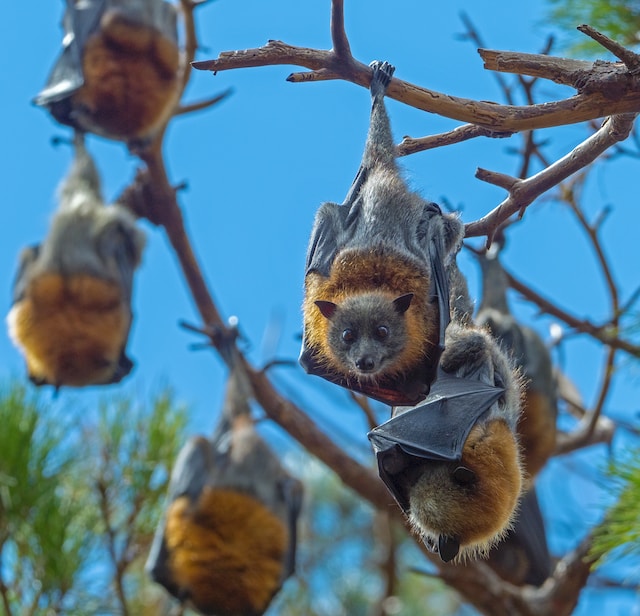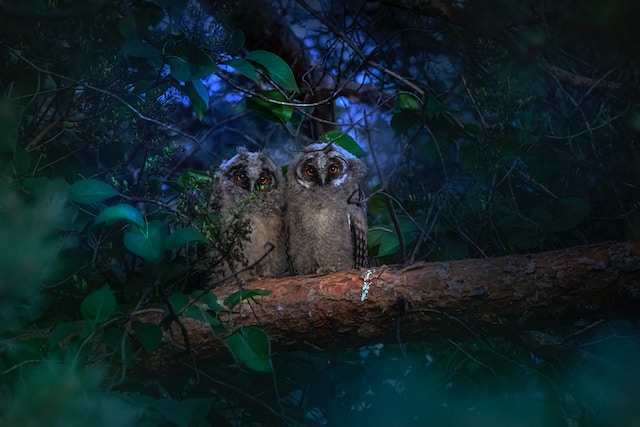While many animals prefer to bask in the sunlight, there exists a diverse array of creatures that come to life under the cover of darkness. These nocturnal animals have evolved unique adaptations that allow them to thrive in the nighttime environment. In this article, we will embark on a journey to discover the intriguing world of animals that are active at night, categorized into key groups based on their characteristics and behaviours.
Mammals of the Night
Bats
Bats are perhaps the most iconic nocturnal mammals, with over 1,400 species worldwide.

They navigate in the dark using echolocation, emitting high-pitched sounds and listening to the echoes to locate prey and avoid obstacles.
Bats play essential roles in pollination and insect control, making them ecologically invaluable.
Owls

Owls are renowned for their silent flight and exceptional night vision.
They are skilled hunters, preying on rodents, birds, and other small mammals.
Owls’ ability to rotate their heads up to 270 degrees enhances their hunting precision.
Night Monkeys
Night monkeys, or owl monkeys, are unique primates adapted to nighttime living.
They have large eyes for improved night vision and primarily feed on fruits, insects, and small vertebrates.
Night monkeys are known for their strong family bonds and monogamous mating habits.
Nocturnal Birds
Nightjars
Nightjars, also known as “goatsuckers,” are insect-eating birds that come out at dusk and dawn.
Their cryptic plumage and haunting calls help them blend into their surroundings.
Nightjars are expert aerial hunters, catching insects in mid-air with their wide mouths.
Kakapos
Kakapos, or night parrots, are critically endangered nocturnal parrots native to New Zealand.
They are known for their distinctive green plumage, large size, and “owl-like” face.
Kakapos are ground-dwelling herbivores and, sadly, one of the world’s rarest birds.
Nighttime Insects
Fireflies
Fireflies, or lightning bugs, are bioluminescent insects known for their enchanting nighttime displays.
They produce light in their abdomens to attract mates and communicate with each other.
Firefly light patterns vary among species and serve as a form of species recognition.
Luna Moths
Luna moths are large, silk moths that are active at night.
They have beautiful, pale green wings and are attracted to lights.
Luna moths are known for their short adult lifespan, as they do not feed and focus solely on reproduction.
Nocturnal Reptiles
Geckos
Geckos are small lizards known for their adhesive toe pads that enable them to climb vertical surfaces.
Many gecko species are active at night, hunting insects and other small prey.
Some geckos are highly territorial and vocalize during the night to establish dominance.
Night Snakes
Several snake species are primarily nocturnal, such as the desert sidewinder and the African egg-eating snake.
Night snakes use their keen sense of smell and heat-sensing pits to locate prey in the dark.
They are often well-camouflaged to ambush unsuspecting prey.
Nighttime Aquatic Creatures
Nocturnal Fish
Many fish species, like catfish and eels, are active at night, using their heightened senses to navigate and hunt in the dark waters.
They often have specialized adaptations, such as barbels or bioluminescent lures, to assist in nighttime foraging.
Bioluminescent Marine Life
In the ocean’s depths, a dazzling display of bioluminescent creatures, including jellyfish, squids, and some fish, illuminates the darkness.
Bioluminescence serves various purposes, from attracting prey to deterring predators and communicating with potential mates.
Conclusion
Nocturnal animals occupy a unique and often mysterious niche in the natural world. Their adaptations to the cover of darkness, from specialized senses to cryptic plumage and bioluminescence, allow them to thrive in environments where daylight creatures may struggle. Exploring the fascinating world of these creatures of the night not only deepens our understanding of the animal kingdom but also highlights the importance of preserving their habitats and protecting these remarkable species for future generations to appreciate and study.
